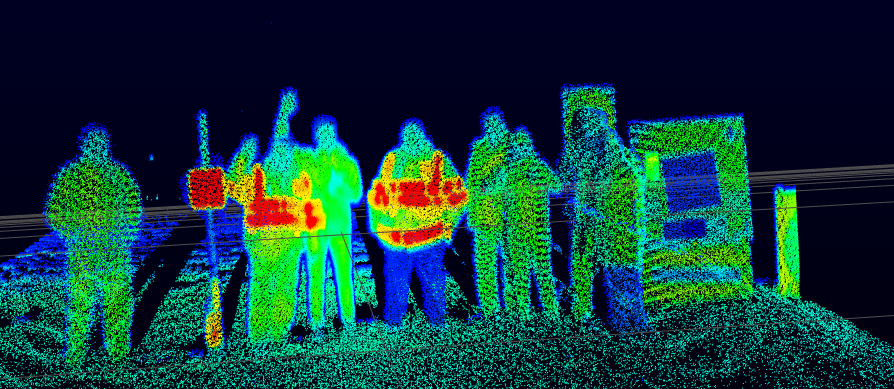A new discussion paper from the Met Office and the National Physical Laboratory (NPL) highlights the practical challenges of understanding the performance of autonomous vehicles (AVs) in different weather conditions.
The paper draws from an ongoing project conducted by the Met Office and NPL and is funded by the UK’s Centre for Connected and Autonomous Vehicles (CCAV).
This Sensor Assurance Framework (SAF) project aims to create a reliable and usable framework for understanding how well AV perception sensors (the eyes and ears of the vehicle) perform in different weather-related conditions. When fully developed, this framework will support validation, safety assurance and simulation testing of AVs across the UK.
Central to SAF project has been the Cardington weather-sensor testbed, which has accumulated over two years of detailed weather measurements and corresponding AV sensor measurements as they observe targets set up at varied distances in a wide range of weather conditions including fog, intense rainfall, clear and cloudy skies and direct sunlight.

Met Office Observations Principal Consultant Dave Jones, who is part of the team leading the weather measurement side of the Cardington testing, said: “The effect of weather on sensor performance is very complex and it is challenging to reflect this when trying to capture the weather envelope for the AV as simply as possible.
“This discussion paper gives examples of how this complexity reveals itself on our testbed and how we might begin to handle this by careful consideration of uncertainty. We are very interested in hearing views from everyone in the wider AV community involved in safety assurance.”
National Physical Laboratory’s Andre Burgess, who looks after strategic partnerships, said: “As well as the scientific and technical aspects of our joint SAF project, we are placing a huge emphasis on engagement with regulators, industry, standards bodies and academia to ensure that these testbed results make a positive difference to the AV industry and public safety.”
The discussion paper comes as the Automated Vehicles Act became law this week and paved the way for self-driving vehicles to be possibly on the UK’s roads as soon as 2026.

Ongoing research
The Met Office and NPL’s Sensor Assurance Framework research at Cardington has been undertaken for around two years, with the aim to test sensor performance against as many different weather types as possible, including rain, hail, sunshine and fog.
The research so far demonstrates an observable relationship between weather conditions and sensor performance, though further study is needed to fully understand this area, including the impact of different locations, road surfaces, vehicle movements and a broader range of weather types. It’s hoped this research will help the autonomous vehicle industry to develop further in the coming years.
The Met Office and NPL will continue collecting weather data and assessing sensor performance in the coming months, with a new testbed at NPL’s headquarters in Teddington and plans to develop a relocatable testbed which can be deployed in a wider range of weather conditions.
The SAF principles also extend to marine autonomous vehicles. Plans are already well underway to build a demonstration testbed around Plymouth Sound UK, as part of the Maritime Autonomy Assurance Testbed (MAAT) project, which is lead by NPL and Lloyds Register with partners including the Met Office, Plymouth Marine Lab (PML), University of Plymouth, and Warwick Manufacturing Group (WMG).
Read the AV and weather discussion paper on the NPL website.
Find out more about the Met Office’s services with Connected and Autonomous Vehicles.

You must be logged in to post a comment.